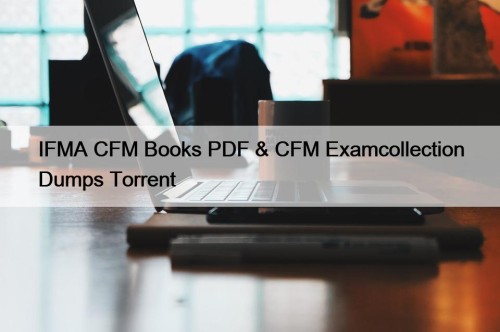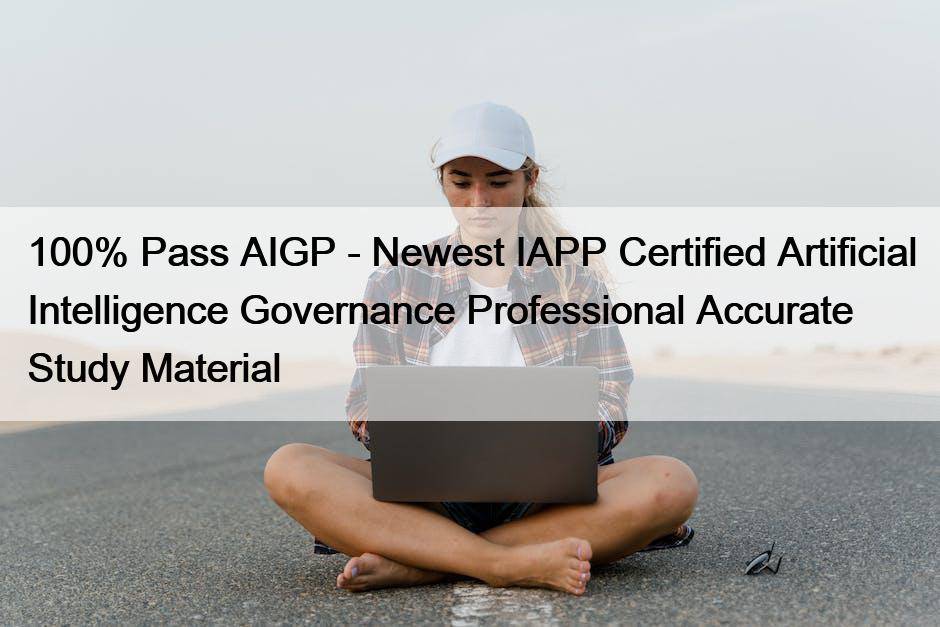Most Popular
 IFMA CFM Books PDF & CFM Examcollection Dumps Torrent
IFMA CFM Books PDF & CFM Examcollection Dumps Torrent
Our product is revised and updated according to the change ...
 Features of MuleSoft MCPA-Level-1 PDF Dumps Formate
Features of MuleSoft MCPA-Level-1 PDF Dumps Formate
As mentioned earlier, PDFDumps solves all problems that you face ...
 Pass4sure Supermicro SMI300XE Pass Guide | SMI300XE Related Content
Pass4sure Supermicro SMI300XE Pass Guide | SMI300XE Related Content
We have created a number of reports and learning functions ...



100% Pass AIGP - Newest IAPP Certified Artificial Intelligence Governance Professional Accurate Study Material

If you choose our AIGP exam questions, then you can have a study on the latest information and techlonogies on the subject and you will definitely get a lot of benefits from it. Of course, the most effective point is that as long as you carefully study the AIGP Study Guide for twenty to thirty hours, you can go to the exam. To really learn a skill, sometimes it does not take a lot of time. Come to buy our AIGP practice materials and we teach you how to achieve your goals efficiently.
IAPP AIGP Exam Syllabus Topics:
| Topic | Details |
|---|---|
| Topic 1 |
|
| Topic 2 |
|
| Topic 3 |
|
| Topic 4 |
|
| Topic 5 |
|
| Topic 6 |
|
>> AIGP Accurate Study Material <<
Free PDF Quiz Marvelous IAPP - AIGP - IAPP Certified Artificial Intelligence Governance Professional Accurate Study Material
Nowadays the requirements for jobs are higher than any time in the past. The job-hunters face huge pressure because most jobs require both working abilities and profound major knowledge. Passing AIGP exam can help you find the ideal job. If you buy our AIGP Test Prep you will pass the exam easily and successfully,and you will realize you dream to find an ideal job and earn a high income. Your satisfactions are our aim of the service and please take it easy to buy our AIGP quiz torrent.
IAPP Certified Artificial Intelligence Governance Professional Sample Questions (Q130-Q135):
NEW QUESTION # 130
CASE STUDY
Please use the following answer the next question:
XYZ Corp., a premier payroll services company that employs thousands of people globally, is embarking on a new hiring campaign and wants to implement policies and procedures to identify and retain the best talent. The new talent will help the company's product team expand its payroll offerings to companies in the healthcare and transportation sectors, including in Asia.
It has become time consuming and expensive for HR to review all resumes, and they are concerned that human reviewers might be susceptible to bias.
Address these concerns, the company is considering using a third-party Al tool to screen resumes and assist with hiring. They have been talking to several vendors about possibly obtaining a third-party Al-enabled hiring solution, as long as it would achieve its goals and comply with all applicable laws.
The organization has a large procurement team that is responsible for the contracting of technology solutions.
One of the procurement team's goals is to reduce costs, and it often prefers lower-cost solutions. Others within the company are responsible for integrating and deploying technology solutions into the organization's operations in a responsible, cost-effective manner.
The organization is aware of the risks presented by Al hiring tools and wants to mitigate them. It also questions how best to organize and train its existing personnel to use the Al hiring tool responsibly. Their concerns are heightened by the fact that relevant laws vary across jurisdictions and continue to change.
Which other stakeholder groups should be involved in the selection and implementation of the Al hiring tool?
- A. Finance and Legal.
- B. Marketing and Compliance.
- C. Litigation and Product Development.
- D. Supply Chain and Marketing.
Answer: A
Explanation:
In the selection and implementation of the AI hiring tool, involving Finance and Legal is crucial. The Finance team is essential for assessing cost implications, budget considerations, and financial risks. The Legal team is necessary to ensure compliance with applicable laws and regulations, including those related to data privacy, employment, and anti-discrimination. Involving these stakeholders ensures a comprehensive evaluation of both the financial viability and legal compliance of the AI tool, mitigating potential risks and aligning with organizational objectives and regulatory requirements.
NEW QUESTION # 131
According to the GDPR's transparency principle, when an Al system processes personal data in automated decision-making, controllers are required to provide data subjects specific information on?
- A. The contact details of the data protection officer and the data protection national authority.
- B. The personal data used during processing, including inferences drawn by the Al system about the data.
- C. The data protection impact assessments carried out on the Al system and legal bases for processing.
- D. The existence of automated decision-making and meaningful information on its logic and consequences.
Answer: D
Explanation:
The GDPR's transparency principle requires that when personal data is processed for automated decision-making, including profiling, data subjects must be informed about the existence of such automated decision-making. Additionally, they must be provided with meaningful information about the logic involved, as well as the significance and the envisaged consequences of such processing for them. This requirement ensures that data subjects are fully aware of how their personal data is being used and the potential impacts, thereby promoting transparency and trust in the processing activities.
NEW QUESTION # 132
Retrieval-Augmented Generation (RAG) is defined as?
- A. Combining LLMs with private knowledge bases to improve their outputs.
- B. Applying advanced filtering techniques to the LLMs.
- C. Reducing computational processing requirements of the LLMs.
- D. Fine tuning LLMs to minimize biased outputs.
Answer: A
Explanation:
Retrieval-Augmented Generation (RAG)enhances Large Language Models (LLMs) by integratingexternal, up-to-date, or proprietary informationinto the generation pipeline-allowing the model tofetch relevant factsfrom a trusted knowledge source at query time.
Though RAG is not defined directly in the IAPP documents, it is a widely recognized technique in AI governance for ensuringmore accurate and contextually grounded outputs, especially inregulated or high- stakes environmentswhere hallucinations are a concern.
* B, C, and Ddescribe optimization or bias mitigation-not the core function of RAG.
NEW QUESTION # 133
What is the most important reason for documenting risks when developing an AI system?
- A. To align with industry standards.
- B. To provide transparency to stakeholders.
- C. To mitigate potential liability.
- D. To promote knowledge sharing.
Answer: C
Explanation:
The most critical reason for documenting AI-related risks is toreduce exposure to legal, regulatory, and reputational liabilities. Clear documentation demonstrates thatrisks were identified, assessed, and addressed, which is essential for accountability and defensibility in the face of audits, litigation, or enforcement actions.
From theAI Governance in Practice Report 2024:
"An effective AI governance model is about collective responsibility... which should encompass oversight mechanisms such as privacy, accountability, compliance." (p. 13)
"Accountability... is based on the idea that there should be a person or entity that is ultimately responsible for any harm resulting from the use of the data, algorithm and AI system's underlying processes." (p. 28) While transparency, alignment with standards, and knowledge sharing are all secondary benefits,risk documentation's primary role is liability mitigation.
NEW QUESTION # 134
CASE STUDY
A global marketing agency is adapting a large language model ("LLM") to generate content for an upcoming marketing campaign for a client's new product: a hard hat designed for construction workers of any gender to better protect them from head injuries.
The marketing agency is accessing the LLM through an application programming interface ("API") developed by a third-party technology company. They want to generate text to be used for targeted advertising communications that highlight the benefits of the hard hat to potential purchasers. Both the marketing agency and the technology company have taken reasonable steps to address Al governance.
The marketing company has:
* Entered into a contract with the technology company with suitable representations and warranties.
* Completed an impact assessment on the LLM for this intended use.
* Built technical guidance on how to measure and mitigate bias in the LLM.
* Enabled technical aspects of transparency, explainability, robustness and privacy.
* Followed applicable regulatory requirements.
* Created specific legal statements and disclosures regarding the use of the Al on its client's advertising.
The technology company has:
* Provided guidance and resources to developers to address environmental concerns.
* Build technical guidance on how to measure and mitigate bias in the LLM.
* Provided tools and resources to measure bias specific to the LLM.
* Enabled technical aspects of transparency, explainability, robustness and privacy.
* Mapped and mitigated potential societal harms and large-scale impacts.
* Followed applicable regulatory requirements and industry standards.
* Created specific legal statements and disclosures regarding the LLM. including with respect to IP and rights to data.
Which stakeholder is responsible for the lawful collection of data used to train the foundational AI model?
- A. The marketing agency's client
- B. The data aggregator
- C. The marketing agency
- D. The tech company
Answer: D
Explanation:
The correct answer is B - The tech company. The party that develops and trains the foundational model is responsible for ensuring the lawful collection of training data.
From the AIGP ILT Guide - Foundational Models & Data Governance:
"Responsibility for the lawfulness of data collection typically lies with the party that trains the model- usually the provider or developer of the foundational model." AI Governance in Practice Report 2024 confirms:
"General Purpose AI providers are required to ensure that training data is lawfully acquired, including compliance with intellectual property and privacy requirements." The marketing agency is only a user or downstream integrator, not responsible for original data collection.
NEW QUESTION # 135
......
You can instantly download IAPP Certified Artificial Intelligence Governance Professional AIGP PDF questions file, desktop practice test software, and web-based IAPP AIGP practice test software. You can test the features of all these three IAPP AIGP Practice Questions formats before buying because ValidExam offers a free demo download facility. You will also be given free IAPP AIGP exam questions updates.
AIGP Popular Exams: https://www.validexam.com/AIGP-latest-dumps.html
- Valid AIGP Vce Dumps ⚜ AIGP Valid Examcollection 🕒 AIGP Exam Success 🤳 Search on { www.testkingpdf.com } for ⮆ AIGP ⮄ to obtain exam materials for free download 🧰Latest AIGP Exam Pass4sure
- Quiz IAPP - AIGP - Authoritative IAPP Certified Artificial Intelligence Governance Professional Accurate Study Material 🎣 Easily obtain free download of { AIGP } by searching on ▛ www.pdfvce.com ▟ 🎻AIGP Practice Test Online
- AIGP Valid Test Preparation ☮ New AIGP Dumps Questions 👗 New AIGP Test Prep 😹 Go to website ⮆ www.pass4test.com ⮄ open and search for ⏩ AIGP ⏪ to download for free 😩New AIGP Test Prep
- AIGP Exam Success 🏡 Exam AIGP Question 🔭 AIGP Clear Exam ☘ Search for ➡ AIGP ️⬅️ and download it for free on ➥ www.pdfvce.com 🡄 website 🩲AIGP Valid Dump
- AIGP Latest Exam Papers ⭐ New AIGP Dumps Questions 👄 AIGP Latest Braindumps Ppt 😈 Open ▶ www.examcollectionpass.com ◀ and search for 《 AIGP 》 to download exam materials for free 🏄AIGP Exam Success
- Hot AIGP Accurate Study Material Pass Certify | Pass-Sure AIGP Popular Exams: IAPP Certified Artificial Intelligence Governance Professional 🎰 Search for ▛ AIGP ▟ and easily obtain a free download on ▶ www.pdfvce.com ◀ 🚲AIGP Exam Vce Format
- AIGP Valid Dump 🗺 Exam AIGP Question 🕤 New AIGP Dumps Questions 🙈 Search for ▷ AIGP ◁ and obtain a free download on ▷ www.real4dumps.com ◁ 🙀AIGP Valid Test Preparation
- Receive free updates for the IAPP AIGP Exam Dumps 🖖 Open ▷ www.pdfvce.com ◁ and search for ☀ AIGP ️☀️ to download exam materials for free ↙AIGP Latest Braindumps Ppt
- AIGP Clear Exam 🐩 Exam AIGP Question 🤍 New AIGP Test Prep 🧨 Download ▷ AIGP ◁ for free by simply searching on ▷ www.examdiscuss.com ◁ 💒AIGP Latest Braindumps Ppt
- Free AIGP Practice 🙋 AIGP Practice Test Online 🦡 Exam AIGP Question 🦊 Search for ⮆ AIGP ⮄ and obtain a free download on 《 www.pdfvce.com 》 🎠Latest AIGP Exam Pass4sure
- Marvelous AIGP Accurate Study Material, Ensure to pass the AIGP Exam 💝 Easily obtain free download of 【 AIGP 】 by searching on 《 www.dumps4pdf.com 》 🚡Valid AIGP Exam Forum
- AIGP Exam Questions
- proweblearn.com kursy.cubeweb.iqhs.pl jackfox233.blogofchange.com new.jashnaedu.com temanbisnisdigital.id financialtipsacademy.in onlinemedicalcodingtraining.com jackfox233.dailyhitblog.com becomenavodayan.com dreambigonlineacademy.com
Tags: AIGP Accurate Study Material, AIGP Popular Exams, Valid AIGP Exam Objectives, AIGP Exam Dumps Provider, AIGP Exam Actual Tests